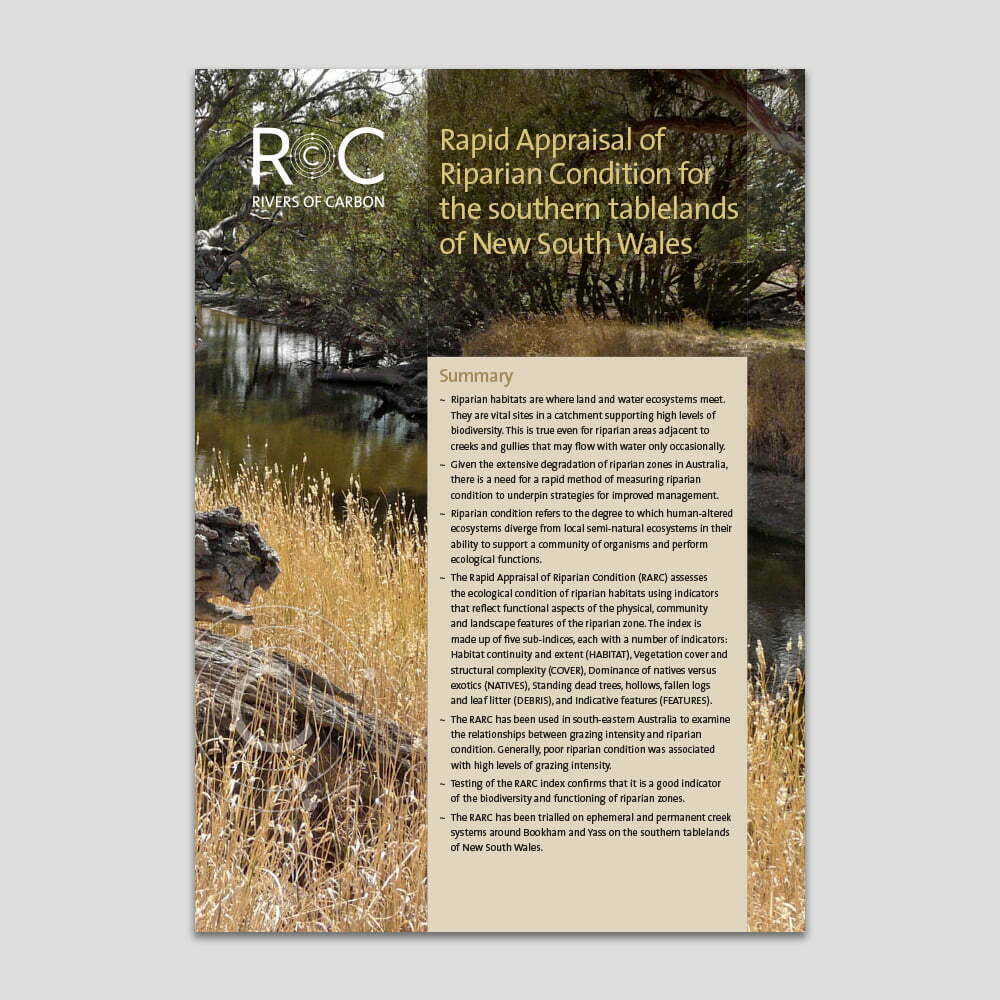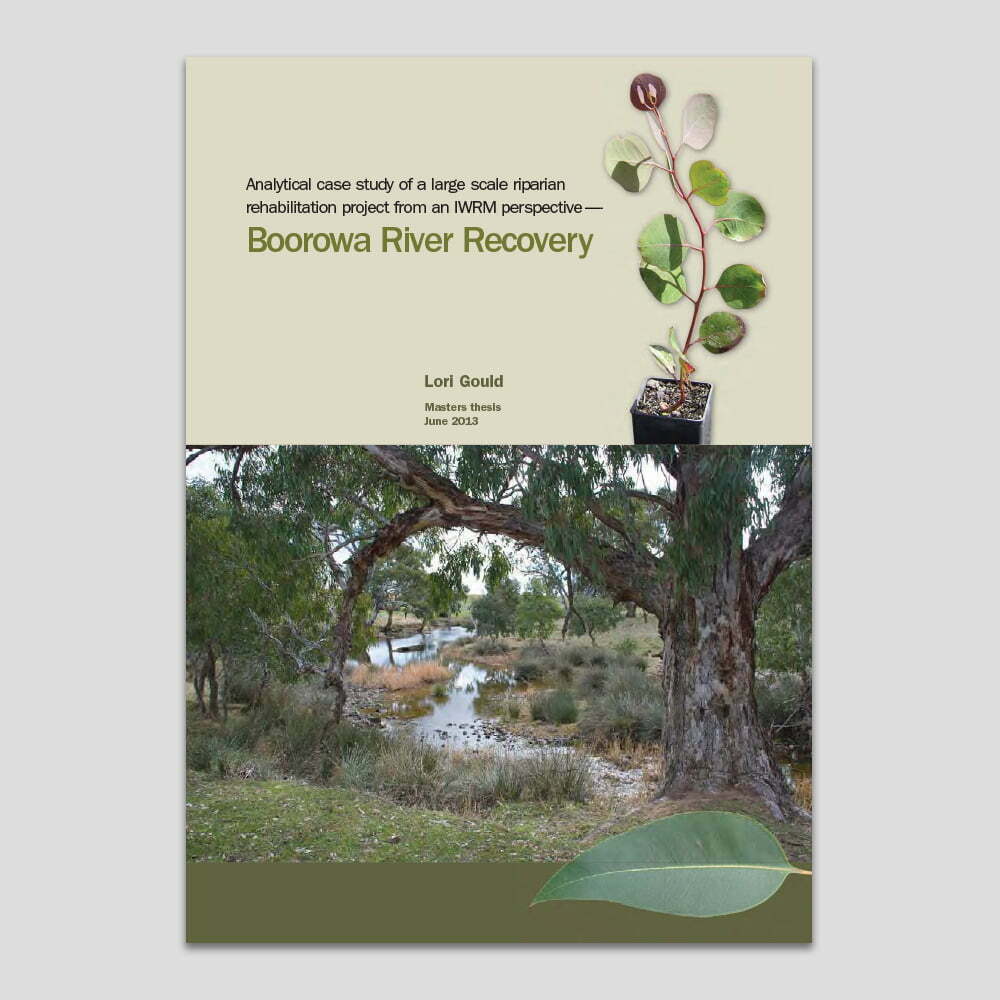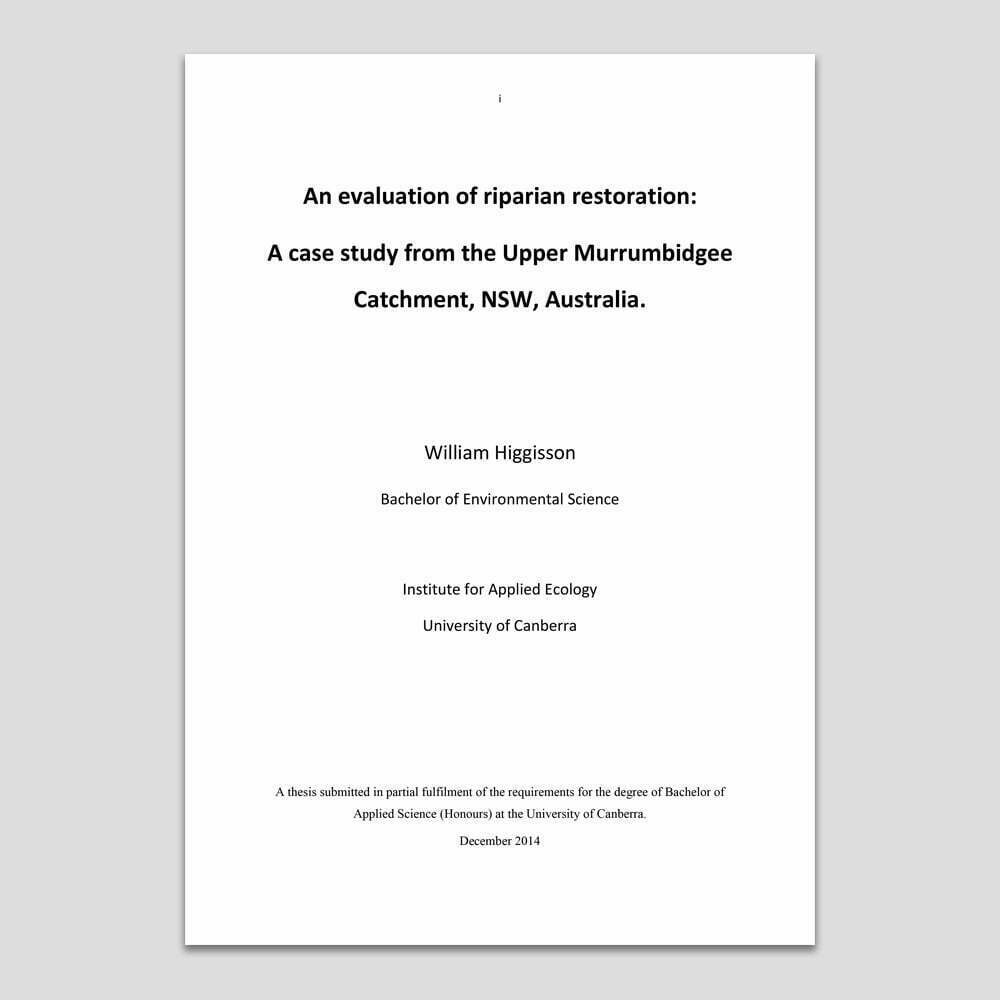
For our Rivers of Carbon projects we have chosen to use the Rapid Appraisal of Riparian Condition (RARC) method developed by Jansen etal in 2001 and 2005. The RARC assesses the ecological condition of riparian habitats using indicators that reflect functional aspects of the physical, community and landscape features of the riparian zone. The index is made up of five sub-indices, each with a number of indicators: Habitat continuity and extent (HABITAT), Vegetation cover and structural complexity (COVER), Dominance of natives versus exotics (NATIVES), Standing dead trees, hollows, fallen logs and leaf litter (DEBRIS), and Indicative features (FEATURES). The RARC was developed as part of the National Riparian Lands R&D Program and has been extensively peer-reviewed and found to be not only scientifically robust, but an excellent way to assess riparian condition, without necessarily having to do detailed surveys.
When we started Rivers of Carbon in 2012 we commissioned another review of the RARC methdology by scientists who are specialists in the field. We wanted to be sure that the RARC was standing the test of time, and that the data we are collecting is both rigorous and meaningful. Dr Paul Reich, one of the people undertaking the review made the following comment:
“The Rapid Appraisal of Riparian Condition (RARC) approach is well suited to assessing long term changes in riparian condition. It incorporates a diverse range of indicators that describe the physical and biological characteristics of riparian zones, and can be a good predictor of more detailed measures of biodiversity and ecosystem functioning. A key advantage is that the RARC approach is very quick to implement and requires minimal technical expertise. This makes it well suited to programs like Rivers of Carbon where a large number of sites are being monitored through time.”
Every Rivers of Carbon site has a RARC Assessment completed prior to any works being undertaken to provide a baseline against which to assess change. In addition, we will often add in a bank profile, species list and other observational measures to build a complete picture of the site. Importantly, we also include what the landholder would like to see happen at the site. We feel this is very important, as we want to be clear about the expectations of all parties involved.
We developed a RARC specifically for the Southern Tablelands of New South Wales as not all riparian zones are the same, and we wanted to have reference condition photographs that people would be able to recognise. You can take a closer look at the RARC by clicking on the image, as well as being able to download it for free.
RARC’s have now been carried out at every Rivers of Carbon site (over 100) before works are undertaken, and again 3-4 years on. Data analysis of 42 sites of this site age range (to date) is showing a small improvement when RARC is averaged across all sites at years 3-4, and is heading in a positive trajectory compared to the baseline surveys. This rate of change is consistent with other research data in terms of the time taken for sites to significantly improve over 8+ years. Sites less than two years old show little change except to groundcover.
Although water quality can’t be directly measured often enough, or at enough sites to provide meaningful results (in the absence of water monitoring stations or volunteers due to the remote nature of sites), there is a body of research showing the links between improvements to riparian ecosystem function (RARC scores), vegetation management and improvements to water quality. An improvement in RARC score correlates with a likely improvement in water quality, particularly by removing livestock from waterways. Social surveys of landholders have shown that protecting riparian areas on farm is of great benefit improving water quality in noticeable ways (through reduced algae blooms, clearer water from reduced sedimentation and better flows from willow control). They also reported reduced stock losses, improved shelter, better grazing management, better time management and improved aesthetics.
If you are interested in reading more about the Rapid Appraisal of Riparian Condition and where it has been applied you are welcome to download our Lori Gould’s (RoC On-ground Program Manager) Masters thesis in which she undertook an evaluation of the Boorowa River Recovery project that was a precursor to Rivers of Carbon. Her thesis is a great read, and clearly shows that a combined output and outcome evaluation yields an enriching insight into the impacts riparian restoration can have on-ground and for the landholder and local communities.
In addition to Lori’s work, Honours Student Will Higgison completed his project by reviewing the Rapid Appraisal of Riparian Condition assessments undertaken in the Bidgee Banks project. Will’s study has shown that lasting changes were achieved and validates the use of the Rapid Appraisal of Riparian Condition as a measuring tool.


